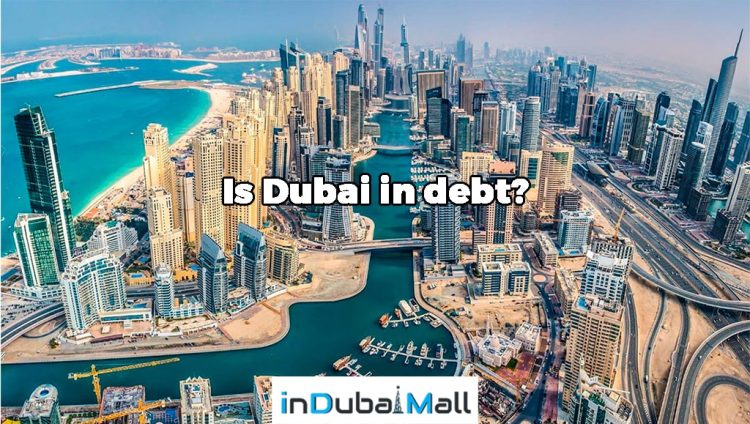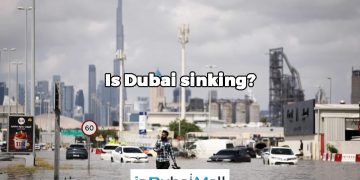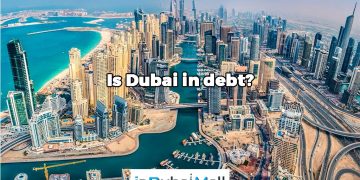Dubai’s economy is growing quickly, with a lot of public spending and a variety of income sources such as tourism, trade, and real estate. Even though Dubai is rich and seen as a prosperous place worldwide, it also has a lot of debt. This debt mainly comes from big construction projects and loans taken by government-connected businesses, especially after the financial crisis in 2009. In the October 2009 documents and debt settlement Dubai, the Dubai government explained its responsibilities by stating that the “total direct debt of the Dubai government” amounts to Dh71.21 billion ($19.4 billion) – significantly lower than the $80 billion to $90 billion that is commonly mentioned. Therefore, you might get surprised if someone ask “is Dubai in debt?” let indubaimall talk about this topic in the next parts if this article.
What is Dubai’s current debt level?
Is Dubai in debt? As of September 30, 2025, the total amount of debt that is still owed is AED 112.4 billion, which is a 3.9% reduction compared to the same period in 2024. The ratio of debt to the country’s gross domestic product is 20.8%. Dubai’s government-owned companies face $78 billion in loan payments over the next few years, as revealed in new research. However, analysts have informed AGBI that the emirate is expected to meet these obligations. The loans originated during Dubai’s 2009 debt crisis and amount to 67% of the country’s GDP, according to a report by the consultancy Capital Economics, which was released last week. About two-thirds of the total debt is due by the end of 2028.
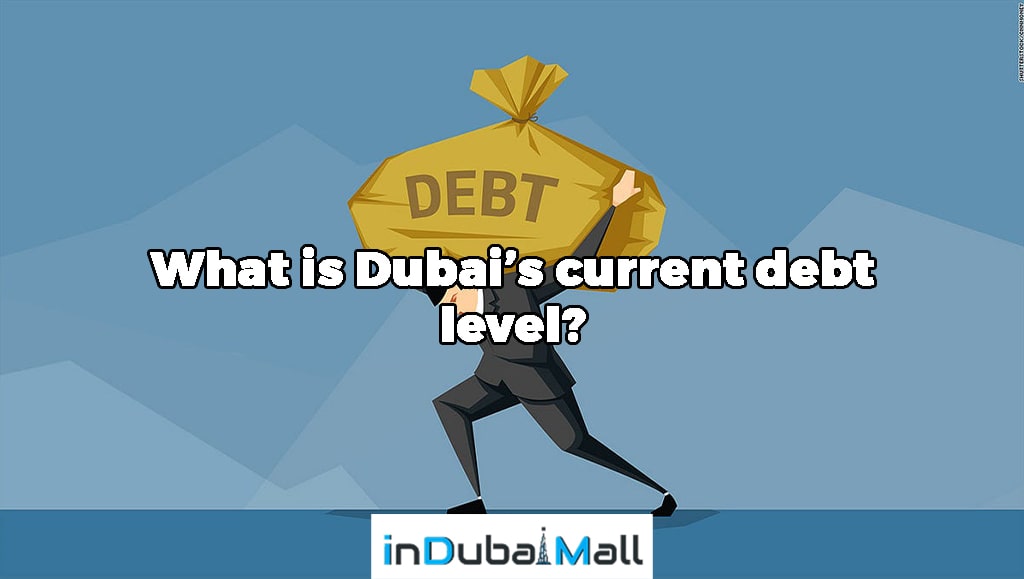
Official figures from Dubai’s Public Debt Management Office (DMO)
The Public Debt Management Office (DMO) in Dubai was created under Law No. 8 of 2022 to control and manage the Emirate’s public debt. The latest data, as of September 2025, shows that Dubai has a total public debt of AED 112.4 billion. This results in a debt-to-GDP ratio of approximately 20.8 percent. Interest payments make up about 4.7 percent of revenue, and the debt relative to revenue is high, at around 116 percent, according to DMO’s reports. The DMO also tracks significant contingent liabilities through guarantees and payment promises, such as those related to energy projects under DEWA and commitments linked to the Expo. With its Public Debt Sustainability Strategy (2022-2024), the DMO is focused on handling debt maturity schedules, managing refinancing risks, maintaining investor trust, and helping to expand infrastructure.
Historical context and major debt episodes
Dubai evolved into a trade-focused, varied economy, setting itself apart from the oil-reliant Gulf states. Starting in the 1950s, it launched significant infrastructure initiatives like Dubai Creek, Jebel Ali Port, Dubai Dry Docks, and Emirates Airline—many funded through loans. Under the guidance of Sheikh Mohammed bin Rashid Al Maktoum in the late 1990s, large-scale projects driven by debt sped up, particularly after the legalization of foreign real estate ownership in 2002, turned real estate and construction into vital economic sectors. However, the debt crisis in 2009 revealed the dangers of excessive borrowing and speculative investments. When Dubai World and Nakheel requested a pause on debt payments, investor trust weakened, external financing costs increased, and Dubai became more reliant on selective support from Abu Dhabi bank dept repayment ruling, underscoring the weaknesses of its debt-dependent growth.
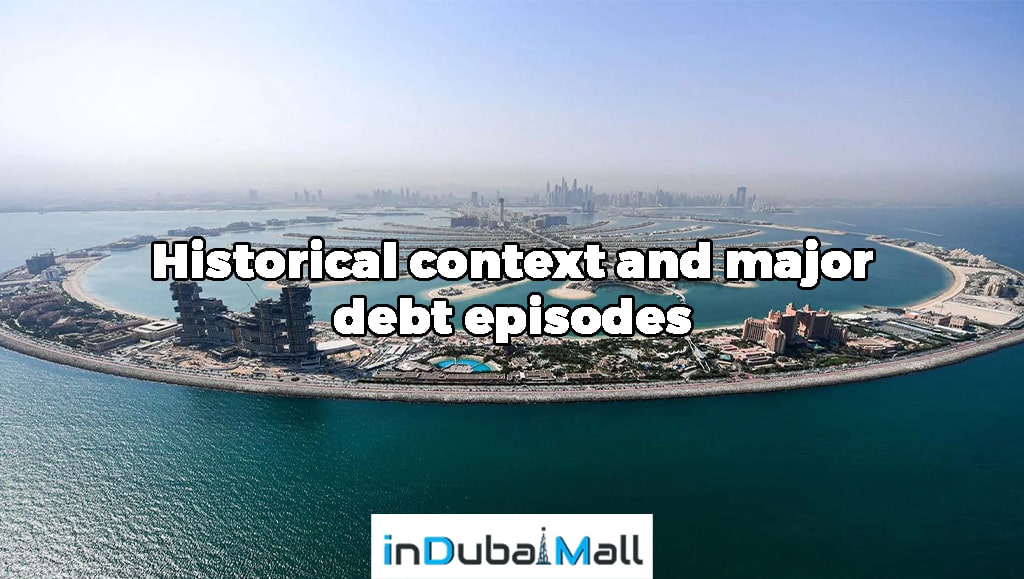
Components of debt and key risks
The Emirate relies heavily on real estate and construction, making it vulnerable to market declines. Its open, trade-oriented economy is also susceptible to global disruptions. Additionally, the occasional need for financial aid from Abu Dhabi shows a lack of fiscal independence and it emphasizes the importance of improving long-term debt sustainability. Here are the Components of debt and key risks that we are going to talk about them in the following part:
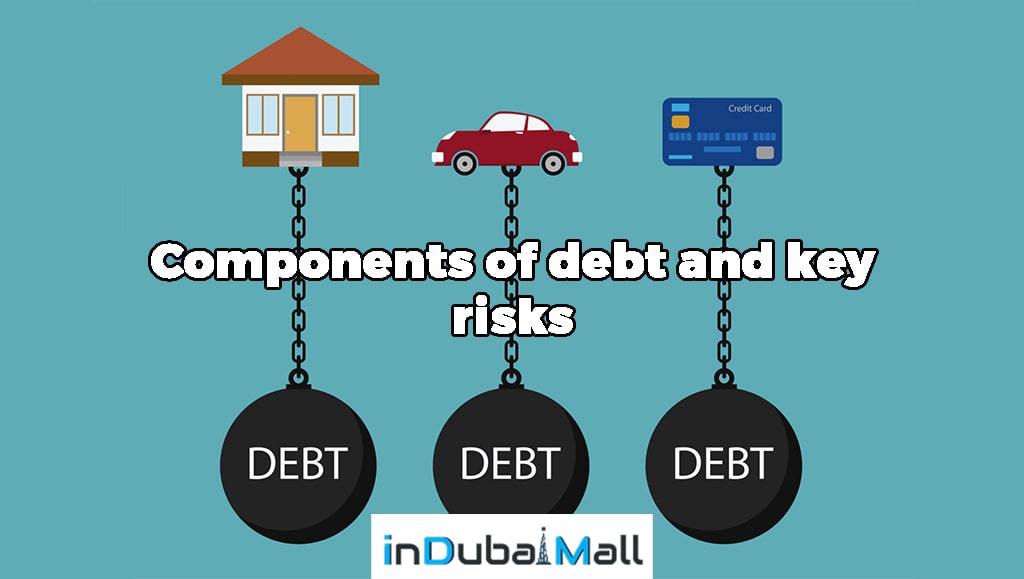

- Government Debt: This refers to the direct borrowings made by the Government of Dubai via bonds, sukuk (Islamic bonds), and loans that finance public infrastructure, development projects, and budgetary requirements.
- Government-Related Entities (GREs): A significant portion of Dubai’s overall debt is attributed to GREs such as Dubai World, Dubai Holding, Emirates Airline, and DEWA. These semi-government entities borrow on their own but they are frequently viewed because they are having unofficial government support. High GRE leverage increases financial vulnerability, as difficulties in these firms could affect the broader economy.
- Contingent Liabilities: These are possible responsibilities that come from government guarantees on GRE loans or projects that are involving public-private partnerships. They may turn into real debt if GREs do not fulfill their obligations.


